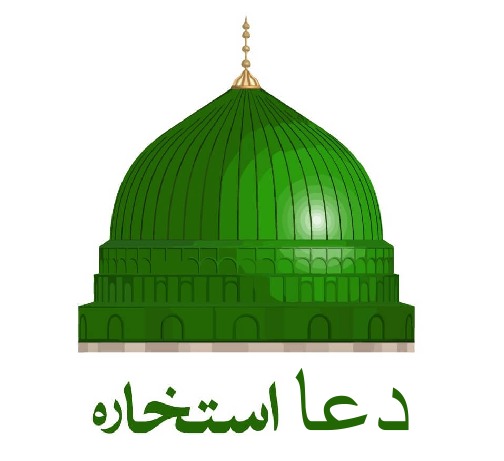
The Significance of Being a Muslim in Islamic Tradition
The term Muslim defines a person who submits to the will of Allah, embracing Islam’s teachings as a believer in Islam. Rooted in the Arabic word “aslama” (to submit), the Muslim identity is central to the faith of over 1.9 billion people worldwide. The Quran declares: “Indeed, the religion in the sight of Allah is Islam” (Surah Aal-E-Imran, 3:19), emphasizing submission as the core of being an Islam follower.
The terms Muslim and Moslem often spark curiosity due to their alternate spellings, but they refer to the same identity. Practices like praying Islam (the five daily prayers, or salah) are integral to this identity, reinforcing faith and community. This blog explores the meaning of Muslim, clarifies the Muslim vs. Moslem debate, and highlights the role of praying Islam in shaping Islamic identity, with real-life examples and beginner-friendly insights.
What’s the Difference Between Muslim and Moslem?
The terms Muslim and Moslem both describe an Islam follower who adheres to the teachings of the Quran and Sunnah. The difference lies solely in spelling and pronunciation, not meaning:
Muslim: The preferred modern transliteration, reflecting the Arabic pronunciation “moos-lim.” It’s widely used in English and aligns with standard Arabic phonetics.
Moslem: An older English transliteration, pronounced “moss-lem,” common in early 20th-century texts. It’s less accurate to the Arabic sound but still valid.
Both terms derive from the Arabic root “s-l-m,” meaning submission or peace. The Prophet Muhammad (peace be upon him) said, “A Muslim is one from whose tongue and hands Muslims are safe” (Sahih al-Bukhari, 10). Scholars like Imam An-Nawawi confirm that Muslim and Moslem are interchangeable, with Muslim now standard due to its phonetic accuracy.
Why the Spelling Variations Exist
Spelling differences stem from:
Transliteration Challenges: Arabic’s unique script leads to varied English renderings, especially in colonial-era texts where Moslem was common.
Regional Pronunciation: In some regions, like parts of South Asia, Moslem reflects local accents but refers to the same believer in Islam.
Historical Usage: Early English writers used Moslem in books, but Muslim gained prominence for accuracy.
Regardless of spelling, the Muslim identity is defined by faith in Allah and His Messenger, expressed through practices like praying Islam.
The Role of Praying Islam in Muslim Identity
Praying Islam, or salah, is the second pillar of Islam and a cornerstone of being a Muslim. Performed five times daily, salah involves specific movements and recitations, including the shahada. The Quran states: “Establish prayer, for prayer prohibits immorality and wrongdoing” (Surah Al-Ankabut, 29:45). Salah strengthens a believer in Islam’s connection to Allah and community.
For a Muslim, salah is:
A Spiritual Anchor: It fosters discipline and mindfulness.
A Community Bond: Congregational prayers, like Jumu’ah, unite Muslims.
A Daily Commitment: It reinforces submission to Allah.
For more on salah, see our post on Mastering the Five Daily Prayers.
Case Study: Embracing Muslim Identity Through Prayer
Yusuf, a 30-year-old convert from Canada, embraced Islam after learning about the Muslim identity. Initially unfamiliar with praying Islam, he struggled with salah’s Arabic recitations. With guidance from his local mosque, he mastered the prayers, finding peace in their rhythm. Yusuf’s story, shared in a community newsletter, inspired others to explore Islamic identity, showing how praying Islam transforms a believer in Islam’s life.
Cultural and Spiritual Dimensions of Muslim Identity
Being a Muslim transcends borders, uniting Islam followers through shared beliefs. The shahada, salah, and other pillars shape Islamic identity across cultures:
Arab World: Muslims emphasize Arabic in prayers, reflecting linguistic roots.
South Asia: Moslem is sometimes used, but Muslim is standard, with vibrant prayer traditions.
Western Countries: Converts adopt Muslim identity, integrating salah into diverse lifestyles.
The Quran affirms: “The believers are but brothers” (Surah Al-Hujurat, 49:10), highlighting unity among Muslims.
Real-Life Example 1: Aisha, a Muslim in Indonesia, finds solace in praying Islam during financial struggles, reinforcing her faith as a believer in Islam.
Real-Life Example 2: Khalid, a Moslem in the UK, teaches his children salah, ensuring their Islamic identity despite cultural challenges.
Common Myths About Muslim and Moslem Busted
Misconceptions about Muslim and Moslem can confuse newcomers. Let’s clarify:
Myth: Muslim and Moslem Refer to Different Groups
Both terms describe the same Islam follower (Sahih al-Bukhari, 10).Myth: Praying Islam is Optional for Muslims
Salah is obligatory for every Muslim, as emphasized in Sahih Muslim (82).Myth: Only Arabs Can Be True Muslims
Islam is universal; anyone who recites the shahada is a believer in Islam (Surah Aal-E-Imran, 3:19).
For more, read our post on Debunking Myths About Islamic Practices.
Beginner Tips for Embracing Muslim Identity
If you’re exploring the Muslim identity, these tips will help:
Learn the Shahada: Understand its meaning as the foundation of faith.
Start with Salah: Begin praying Islam with one or two prayers daily, gradually increasing.
Connect with Community: Join a mosque to learn from other Muslims.
Study Islam’s Basics: Read about the Five Pillars to ground your Islamic identity.
Check our guide on Beginning Your Islamic Journey for more.
The Global Unity of Muslims
The Muslim identity unites Islam followers worldwide, despite linguistic variations like Moslem. From praying Islam in mosques to reciting the Quran, Muslims share a common purpose. The Quran states: “Hold fast to the rope of Allah and do not be divided” (Surah Aal-E-Imran, 3:103). Whether spelled Muslim or Moslem, the essence of faith remains unchanged.
FAQs About Symbol of Islamic Faith
What is the main symbol of Islamic faith?
The shahada, declaring belief in Allah and His Messenger, is the primary symbol of Islam (Sahih al-Bukhari, 5827).
Is the crescent moon a religious symbol?
No, the crescent moon is a cultural symbol tied to the lunar calendar, not a religious one.
What’s the difference between Muslim and Moslem?
They’re alternate spellings for the same believer in Islam, with Muslim being the standard spelling today.
Why is the shahada significant for Muslims?
It’s the first pillar of Islam, recited in daily prayers and conversions (Sahih Muslim, 233).
How is the shahada used in daily Muslim life?
Muslims recite it in salah, during hardships, and to reaffirm faith in Allah’s oneness.
Does the crescent moon appear in Islamic texts?
No, it’s a cultural symbol, not mentioned in the Quran or Sunnah.
How does the shahada shape Islamic identity?
It unites Muslims worldwide, defining their faith and purpose (Surah Al-Baqarah, 2:163).
Author Bio
Maira Kamran is a passionate content writer dedicated to creating informative and engaging content that resonates with readers. With a focus on Islamic practices and lifestyle, Maira aims to provide valuable insights to help readers navigate their spiritual and everyday lives. Visit her whatsapp, for more helpful resources and guides.
